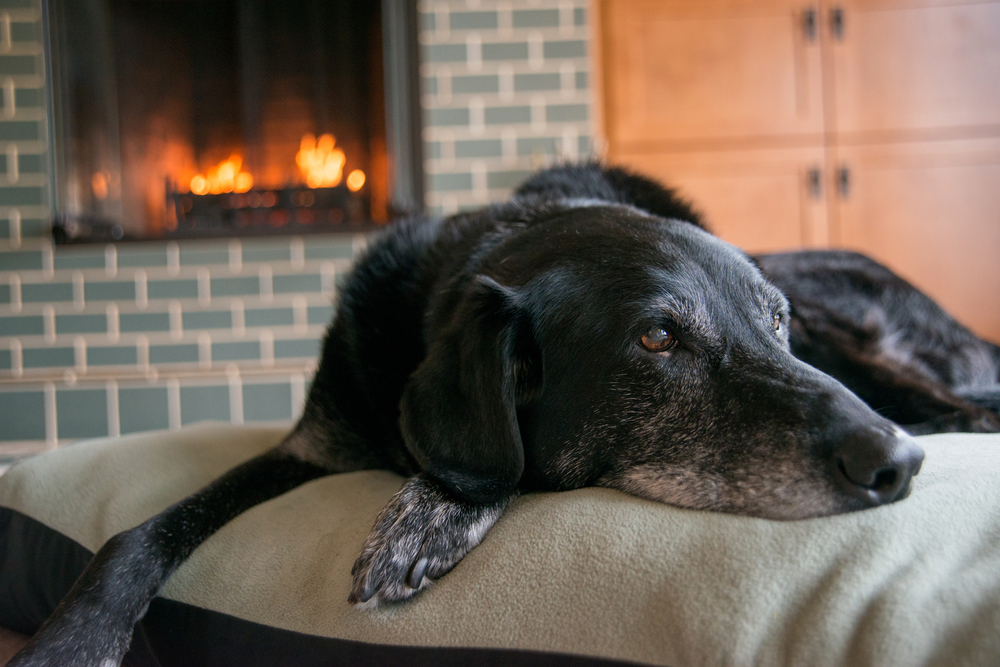Tails
Making pet parenting easy

Caring For Our Canine Senior Citizens
This entry was posted on 2019-06-09.
It is a given that your puppy will get older every year, no matter how much we want them to stay young forever. And with this increasing age, we need to change how we treat and care for them. This also includes our expectations from them regarding their ability to exercise, often they will do this to the best of their ability, but often to their own detriment, to please you.
AGE MATTERS:
The first thing that is important to realise is that the size of your dog will influence its age; when is your dog considered senior?
Although there really is a lot of variation depending on individual animals, in general, we should follow the estimated guidelines to help us. Remembering the bigger the dog is, the faster it ages.
As a guide; giant breeds are considered senior from 5 - 6 years, large breeds are considered senior from 7 - 8 years, medium breeds are considered senior from 8 - 10 years and small breeds are considered senior from 10 - 12 years of age.
Besides showing a few grey hairs, we should expect a number of other degenerative changes to occur; such as arthritis, decreasing dental health, skin, coat and nail changes, decreasing metabolism and cognitive function and any other symptoms that can cause them to slow down (even when we can’t notice it from the outside). Remember that dogs are instinctively good at hiding any signs of vulnerability or pain.
KEEP ‘EM WALKING:
Arthritis is a big deal, if left untreated, it can significantly decrease the quality of your dog’s life in its golden years. Mobility is extremely important. The key is regular exercise through walking. Keep their muscles and joints healthy and strong. Keep them as mobile as possible for as long as possible. Imagine a swinging pendulum, slow repetitive motion, daily. A long strenuous walk on the weekend is really not ideal for senior dogs as they will overexert themselves and will become stiff and sore for a few days afterwards. Also remember that your senior dog will also not always be able to jump in and out of the car, no matter how much they want to. With age, you should expect this action to become too much for your senior dog and you should help them rather than let them struggle and injure themselves.
Before your pet becomes really arthritic one may even want to start thinking along the lines of joint supplements, special joint diets and physio and/or laser therapy to help with mobility. Eventually, you’ll need to keep their inflammation down with medication from your vert and anti-inflammatories. Again, keeping them mobile is key.
Another important matter regarding arthritis is the fact that it is often worse as it gets colder, and after long periods of rest. Allow your older dog time to slowly get up in the mornings, especially in winter, and give them time to stretch. Make sure the floors are not too cold or slippery. Older pets also need good sleep, a good comfortable dog bed is essential as it allows their achy bodies to rest well and keeps them warm.
ADJUST THEIR DIET:
A decrease in metabolism is a normal ageing process, but if we know how to manage our older pets diets well, a lot of problems can be prevented. As your dog slows down, their metabolic energy requirements decrease, which means that if fed at the same rate, fat will tend to accumulate more easily. Thus we need to change their diet to maintain a lean body mass and use good quality, easily digestible protein to do this. The best way to keep tabs of this is to monitor your pet's weight so remember to weigh them regularly.
GROOM YOUR POOCH:
Older dogs have generally decreased immune systems, making infections more likely to happen. Their skin’s elasticity starts to decrease and their coat becomes duller. It becomes more and more essential to groom your older dog to keep them clean, get rid of excess hair and maintain skin health. We also then start noticing more warts, cysts, lumps and bumps on our senior dogs. It is important to have them check and monitored regularly.
Their nails will start to get thicker and wear unevenly, especially on more arthritis-affected joints and legs. Check their nails, and trim them, as this really will also affect their comfort and mobility. But a word of advice; it is difficult to teach an old dog to have their nails trimmed, as they are thicker, their fingers and toes are more arthritic and they really hate it. Teach your dog to have their nails trimmed from a puppy, as it’s not ideal to have to start sedating geriatric animals to have nail trim.
Smelly breath and dental disease become more noticeable as dogs get older and plaque buildup and gingivitis become more prominent. It is very important to have smelly breaths and bad teeth looked at by your vet, as this poses a source of infection that can affect your dog's mouth, as well as cause other problems in the gastrointestinal, cardiac and renal systems. It is of utmost importance to prevent dental disease in dogs from a young age by brushing your dog’s teeth, using dental dog chews and watching what you feed them. Dentistry really is an area of pet health where prevention is better than cure.
Older dogs may be less energetic and sleep more, but their mental health is still vital. They still love their walks and new smells. Remember that older canine citizen’s like routine, but routine does not mean boring. They still appreciate changes every now and then. Keep their brains active, give them new toys and chews. Just because they can’t see or hear you as well anymore doesn’t mean that they don’t love attention and cuddles.



